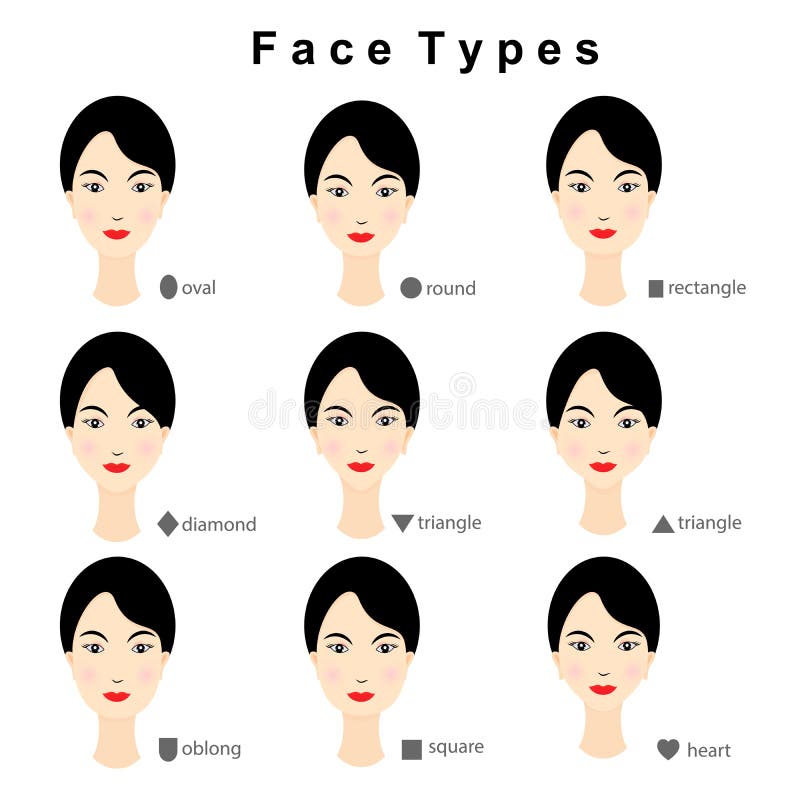Have you ever stopped to consider the incredible range of features that define Asian faces? Beyond the common stereotypes, a vast tapestry of beauty and individuality unfolds. From the delicate features of a Japanese geisha to the strong cheekbones of a Mongolian nomad, Asian faces tell stories of resilience, culture, and a rich history spanning continents. This article delves into the beautiful diversity within Asian faces, debunking myths and celebrating the unique characteristics that make each individual truly special.

Image: www.dreamstime.com
It’s crucial to understand that attempting to categorize “types” of Asian faces is inherently limited and prone to perpetuating harmful stereotypes. Instead, we aim to explore the inherent diversity within Asian populations, appreciating the nuanced differences that make each individual distinct. This journey will uncover the fascinating origins of various facial features, shedding light on the complex interplay of genetics, geography, and cultural influences.
A World of Diversity: Unveiling the Palette of Asian Faces
The Asian continent is a sprawling landscape of diverse cultures, climates, and histories. It’s no surprise that this diversity reflects in the faces of its people. Instead of focusing on rigid categories, let’s explore some of the key features that contribute to the unique beauty of Asian faces:
1. Eye Shape: A Window to the Soul
One of the first features that often comes to mind when discussing Asian faces is the captivating shape of the eyes. While the “monolid” is often highlighted, it’s crucial to understand that eye shape varies greatly within Asian populations. From the almond-shaped eyes of many East Asians to the slightly upturned eyes of some Southeast Asians, the eyes tell a story of adaptation and evolution. The epicanthic fold, a skin fold that appears across the inner corner of the eye, is another characteristic often associated with Asian faces. This fold, more common in East and Southeast Asian populations, is believed to have evolved as a protective mechanism against harsh weather conditions and bright sunlight.
2. Nose Shape: The Defining Feature
The nose, like the eyes, plays a significant role in shaping the overall aesthetic of an Asian face. While a slightly flattened nose bridge is a characteristic observed in many Asian populations, it’s important to remember that this feature exists on a spectrum. Some Asian noses feature a pronounced bridge, while others might have a more rounded tip. As with other features, variations in nose shape within Asian populations are influenced by factors like ancestry, geography, and climate. For example, certain Tibetan populations have evolved larger noses to help them breathe comfortably at high altitudes.

Image: www.multilingirl.com
3. Cheekbones: The Structure of Strength
Prominent cheekbones are another striking feature found in many Asian faces. This striking feature is often associated with a sense of strength and character. The prominence of cheekbones can vary greatly across different individuals and populations. In some cases, cheekbones might be more pronounced and sculpted, while in others they may be more subtle and delicate.
4. Skin Tone: A Spectrum of Beauty
While skin tone is inherently diverse across all populations, it’s essential to acknowledge the incredible range of skin tones found within Asian populations. From the porcelain-like complexion observed in some East Asian populations to the sun-kissed hues prevalent in Southeast Asia, the diversity of skin tones within Asian populations is remarkable.
5. Hair and Facial Hair: Reflections of Cultural Identity
Hair texture and facial hair patterns can also vary significantly within Asian populations. From the straight, sleek hair of many East Asians to the wavy or curly hair common in South Asia, the diverse textures and colors of Asian hair showcase a beautiful tapestry of cultural heritage. Facial hair patterns also play a significant role in shaping a person’s appearance. While some Asian populations might feature heavier facial hair growth, others might have minimal or no facial hair at all.
Beyond the Physical: Celebrating the Essence of Asian Beauty
Beyond the external features, it’s equally important to understand that Asian beauty transcends physical traits. The beauty of Asian faces lies in their ability to express a wide range of emotions, from joy and laughter to sorrow and resilience. It’s essential to move beyond superficial classifications and embrace the unique individuality within each Asian face.
Actionable Steps: Embracing Diversity and Challenging Stereotypes
Understanding the diversity of Asian faces requires a shift in perspective. We must actively challenge harmful stereotypes and embrace the beautiful spectrum of features that represent the Asian experience. Here are some actionable steps we can take:
- Challenge Media Representations: Engage in critical thinking when consuming media, questioning the often narrow and stereotypical representations of Asian faces.
- Amplify Diverse Voices: Support organizations and individuals working to promote inclusivity and representation within Asian communities.
- Engage in Open Dialogue: Start conversations about diversity and representation with your friends, family, and community members.
- Be an Ally: Offer support and solidarity to individuals who are facing discrimination or prejudice based on their race or ethnicity.
Types Of Asian Faces
A World of Wonder: Embracing the Unique Beauty of Asian Faces
The diversity of Asian faces is a testament to the richness and beauty of human diversity. As we move forward, let’s embrace the unique characteristics that define each individual, celebrating the beauty and uniqueness found in every face. The journey of understanding and appreciating diversity is an ongoing process, and it’s by challenging stereotypes and promoting inclusion that we can create a more just and equitable world for all.





